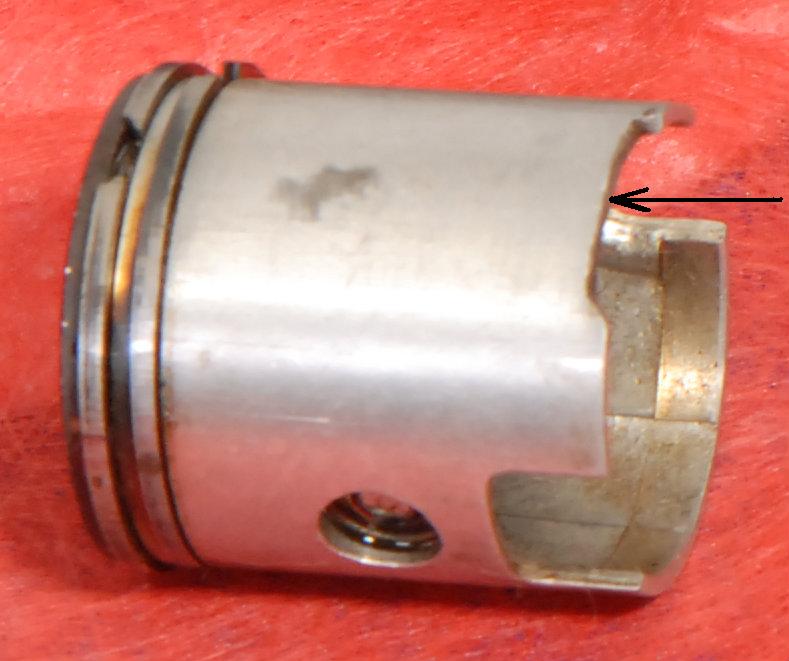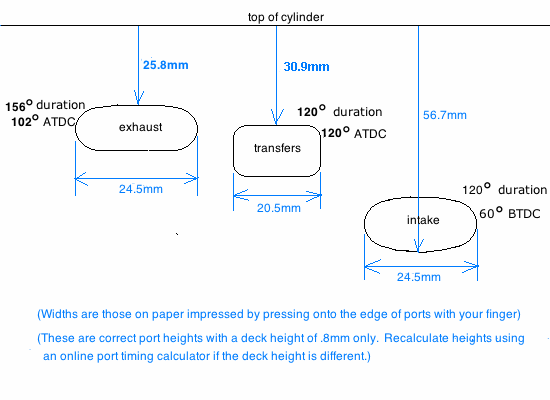|
How to Increase the Power of the 48cc Engine of Motorized
Bicycles 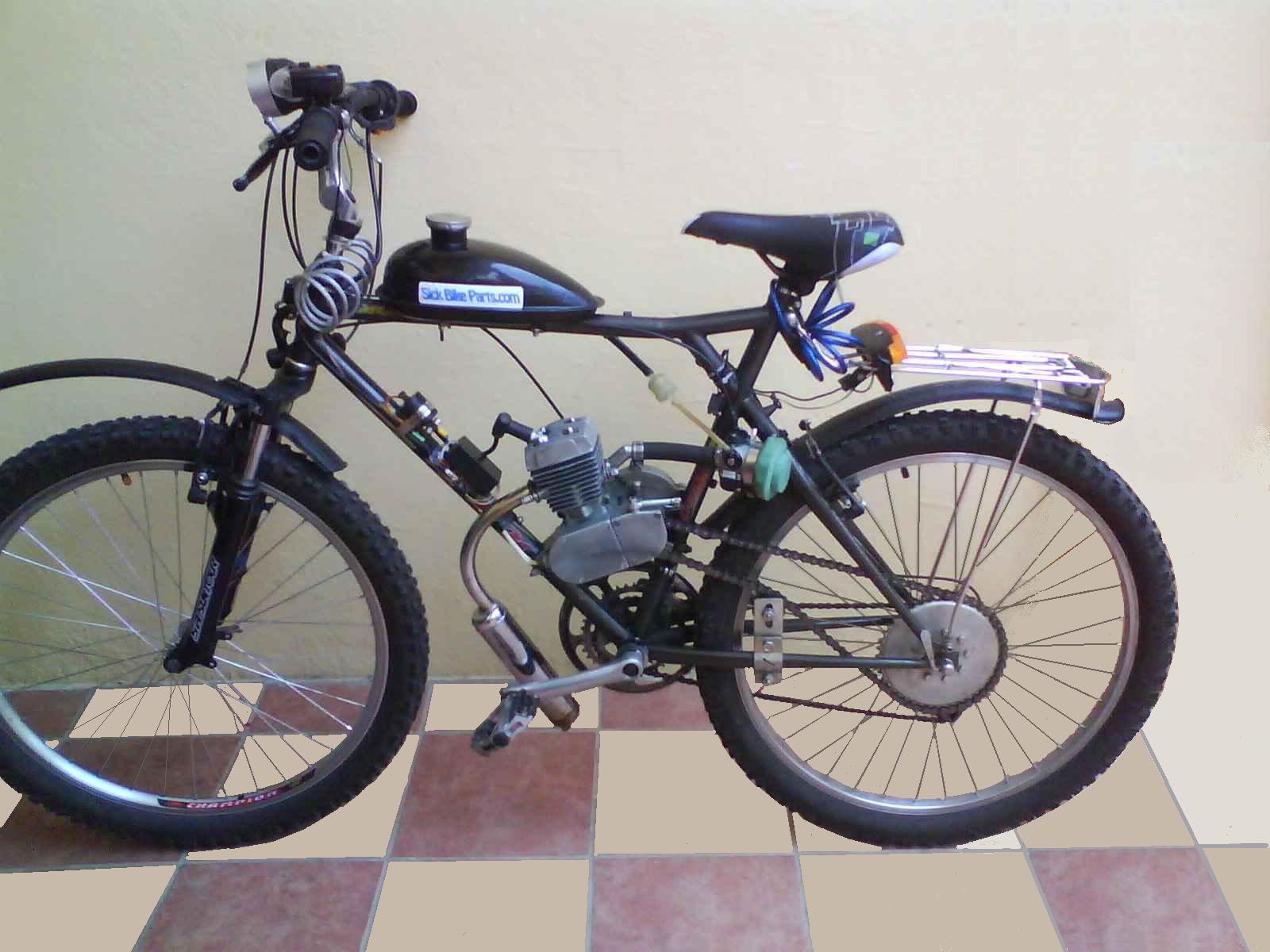 Without modifications this engine only has 2 horsepower and is not strong enough to easily haul heavy people or climb inclined streets. This page lists the necessary modifications to make it where you can climb most streets up to around 10 degrees inclination. Make sure the hole diameter in the carburetors
main jet is within .02mm of .6mm (#60) to maintain the ideal ratio of air to gasoline (15 to 1) at or near seal level. (look at this chart). Less gasoline in places of high altitude
surprisingly gives more engine power (and around 80km per tank which is
1/2 gallon).This photo shows the center jet hole filled with solder and a hole drilled into it for the correct sizing. 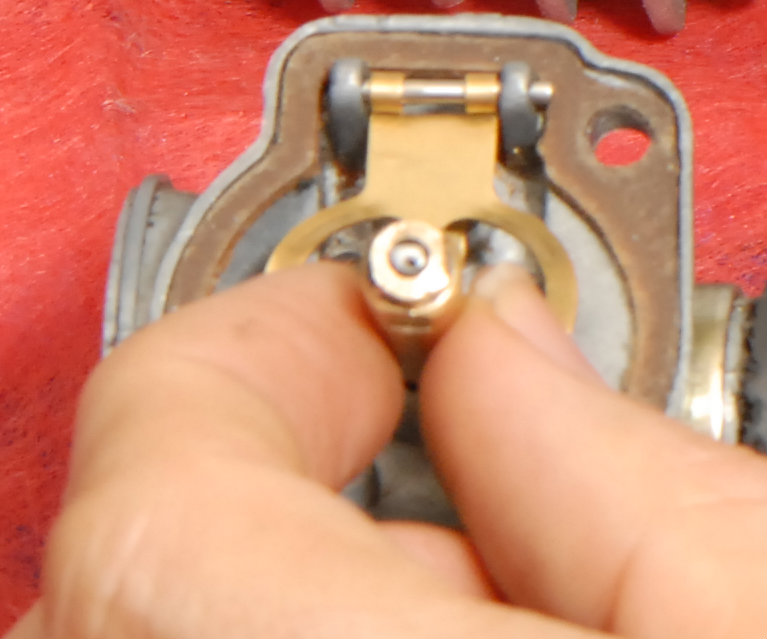 Install an extension (10-14cm) between the carburetor and the motor which makes use of vacuum/pressure wave resonance to push 15% more air/gas mixture into the engine for 15% more power when your speed is less than 15mph. This is very important if you want to be able to climb inclined streets. 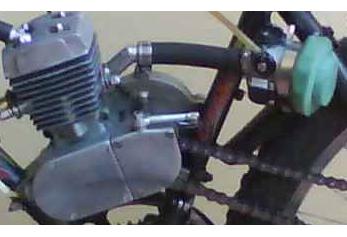  Cut 1.5mm from the bottom of the intake skirt
of the piston to permit the air/gas mixture to enter the engine 4 degrees
earlier in each engine cycle. The period of intake port opening will then
be 121 degrees as this chart shows is the best for both low and high
rpm. The cylinder compression in this engine is low at 100 pounds per square inch. 20% more compression will give 10% more speed/power. This can be acheived by reducing the head surface by 3mm. It can easily be machined off or you can use course sandpaper on glass and reduce the head surface manually. Standard cylinder compression is 100psi and will increase to 120psi after this modification. But it is best to replace the weak bearing in the piston if you do this modification. 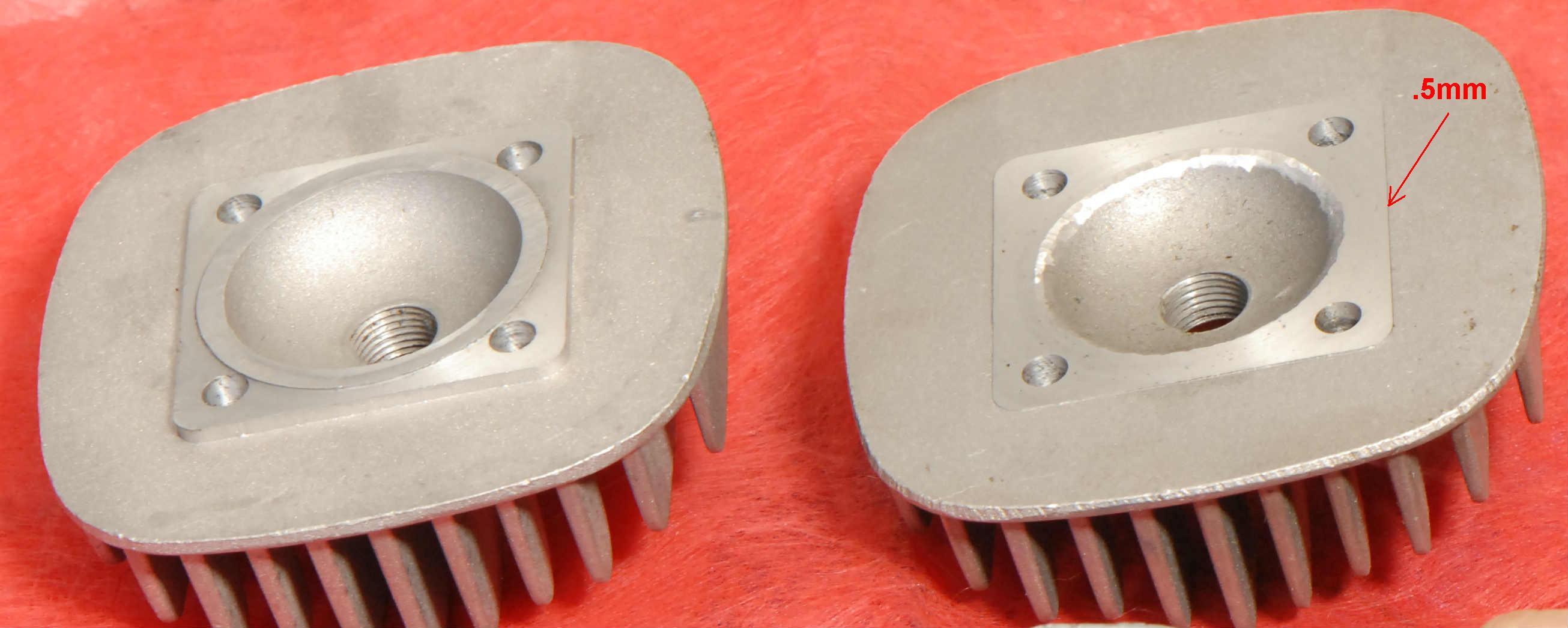 Use a rotary tool to change the ports in the cylinder to be equal to the measurements in the drawing below. This will increase power throughout the whole rpm range.
There is also an ignition system for this engine (CDI with the ignition coil) which is available for $75. 2.5% more engine power is derived for each 33% increase in spark energy according to research, "Devices to Improve the performance of a conventional two-stroke spark ignition engine". To read more about how to increase power 10% with this system click here. References: "The Effect of Crankcase Volume and the Inlet System on the Delivery Ratio of Two-Stroke Cycle Engine" by Fujio Nagao of the University of Kyoto
|

